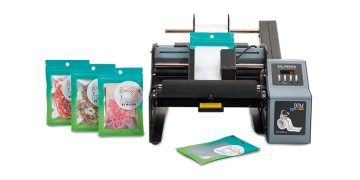As the world’s largest producer of prunes, California is internationally renowned for its leading agricultural practices and food safety standards. Now, with advances in technology, California Prune growers are exploring data, pioneering techniques and processing efficiencies that will help the US maintain its status as category leader.
This includes investment into research and partnerships with leading universities and experts in order to support cost-effective and innovative practices that can improve yield, quality, and, crucially, sustainability.
“California Prune growers have always been adaptable and innovative in their approach to dealing with challenges, whether that is drought, disease or pests,” says Donn Zea, Executive Director for the California Prune Board. “With changing weather patterns, our focus on efficient irrigation as an adaptation strategy has enabled California to remain the world’s leader in producing the highest quality, great-tasting prunes.”
Water management has long been a focus in the orchards, with California Prune growers collaborating with researchers from the University of California Cooperative Extension to explore irrigation methods.
Today, growers irrigate their orchards based on a variety of factors, including air temperature, humidity, and calculated evapotranspiration schedules. Technology has even enabled growers to monitor soil conditions through sensors and adjust irrigation schedules using a smartphone app.
The use of drip irrigation and precise micro-irrigation systems to reduce water consumption across 41,000 acres of plum trees is certainly bearing fruit, with the industry seeing a 30-35 percent reduction in water usage since the 1990s. With advancing technology, research and implementation remain ongoing for systems that use state-of-the-art sensors, data, and modelling to help growers make decisions around irrigation amount and timing.
Meanwhile, these technologies are also being explored by researchers and growers to inform decisions around pruning, thinning, fertility management, orchard stress and pest management. All are areas the CPB has committed research investment into for decades, supporting programmes exploring the development of pest control techniques with the least environmental impact as well as fruit thinning practices and varietal selection programmes. The latter includes work with UC Davis on the development of new prune varieties that reduce drying costs, lengthen bloom time to mitigate the risk of weather-related bloom issues, and extend harvest time to help with labour constraints.
The California Prune industry has long stayed ahead of the curve on labour management, food safety and quality with the use of mechanisation and automated drying techniques, which also ensure consistency. Mechanical tree shakers speed up harvesting, with fruit caught on frames to ensure they never reach the orchard floor. It is a practice that California growers are meticulous about to preserve quality, with padded equipment also in use to avoid damaging or bruising the fruit.
Once harvested, prunes are processed in state-of-the-art high throughput optical sorters to minimise waste and ensure quality by detecting and mechanically removing foreign materials, pits, and otherwise damaged prunes. As technology advances, so does the equipment, with machine learning used to improve precision detection capabilities.
Prunes are then dried in climate-controlled tunnels for precise periods of time at exacting dehydration levels. It is an intricate sequence of scientifically determined, fully automated, and strictly sanitary operations perfected by growers themselves to maximise efficiencies and protect product quality.
Following harvest, the hard work in the orchards continues for growers who cultivate trees ready for the winter months, hand pruning like their ancestors did to regulate tree shape. Here too, work is in hand to utilise modern methods, with prune and other commodity growers partnering with the University of California to explore the benefits mechanical pruning could have on yield. Though its early days, it could lead to California Prune growers employing a hybrid approach to deliver premium prunes.
Away from the orchards, data and weather patterns are being analysed, with predictive analytics in use to help forecast yield and optimise resource allocation. A longstanding research initiative led by Farm Advisors from the University of California has been providing insights into the correlation between temperatures during and around bloom and fruit set.
Today, bloom is just weeks away, which will serve as a good indicator for the 2024 harvest. Growers are confident the balance of innovation and techniques passed through generations will stand the industry in good stead. Donn concludes: “We grow, harvest and process safely, responsibly and sustainably to ensure California Prunes remain prized for their size, quality, and taste, setting the standard for discerning consumers worldwide.”




















